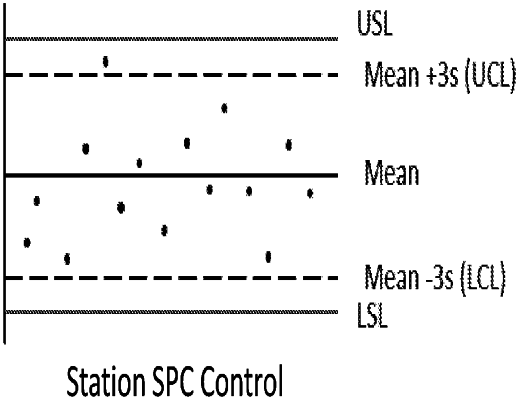| CPC G05B 19/41875 (2013.01) [G05B 13/027 (2013.01); G05B 2219/32193 (2013.01); G05B 2219/32194 (2013.01); G05B 2219/32195 (2013.01)] | 20 Claims |

|
1. A computer-implemented method for training a deep-learning controller to control a manufacturing process executed in a manufacturing system comprising a plurality of process stations, comprising:
training, by a computing system, a deep learning processor to predict an expected intermediate value or an expected final output for an article of manufacture undergoing the manufacturing process, wherein the training comprises:
learning, by the deep learning processor, to generate the expected intermediate value or the expected final output based on a set of control values output from a process station from the plurality of process stations;
identifying, by the computing system, key influencers in the set of control values that most impact the expected final output;
based on the key influencers, generating, by the computing system, a robust training data set for continual training of the deep learning processor, wherein the robust training data set comprises new control inputs comprising conditions for generating intermediate values that exceed an expected fluctuation but yields final outputs that are in specification; and
re-training, by the computing system, the deep learning processor to predict the expected final output based on the robust training data set.
|